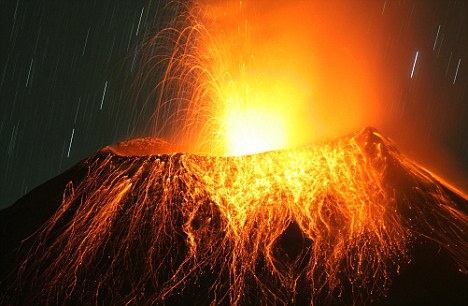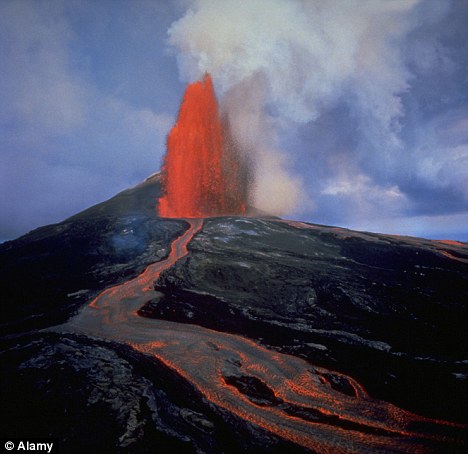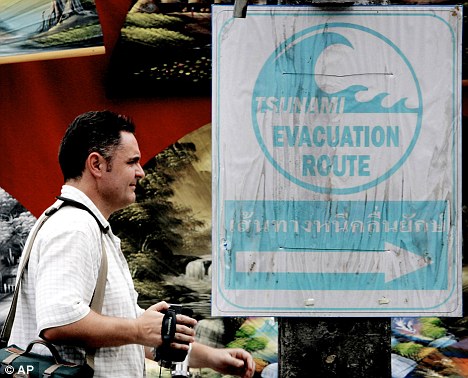Geologists say a pause in the movement between the two continents could mean the tectonic plates are about to change direction, in what has been described as a 'scientifically fascinating' development.
The northern edge of the African tectonic plate has descended under Europe for millions of years but recently this process halted, it has been reported.

According to the BBC, this new development could herald the beginning of a rare - and scientifically fascinating - event of a new subduction zone.
The dense rock at the far north of the African tectonic plate, beneath the Mediterranean Sea, has practically sunk under the Eurasian plate, on which Europe sits.

Rinus Wortel, from the University of Utrecht, told BBC News: 'Africa won't sink, but Africa and Europe continue to move together; so where is this taken up?
'It looks possible that on the appropriate timescale, we are witnessing the beginning of subduction of Europe under Africa.'
The Utrecht group's analysis of the Mediterranean Sea's complex geological structure and history reveals that the continents' slow convergence of a few centimetres each year was partially obstructed by the collision of two plates further east, in Turkey.
And further subduction was prevented by the lightness of the African continent. Parts of the African plate that did subduct broke away and are now descending towards the Earth's mantle.

Scientists' research, which has included the observation of recent earthquakes, suggests the end result could be beginning of a new subduction moving in the opposite direction.
Professor Wortel added: 'We see what motion occurs in the earthquakes, and we see that the fault planes dip towards the South.'
The power of subduction zones to generate huge natural events has been highlighted again by the Japan earthquake and tsunami - but scientists say the Mediterranean's geology is very different.
However, despite the smaller risk of natural events in the region, there is concern that European countries are not investing enough money into building a tsunami warning system.
If there is confirmation that subduction has begun, scientists would be be able to make better assessments of the earthquake and tsunami risk in Europe.
Professor Wortel said: 'We'll keep track of the seismic activity to see whether it continues to indicate this underthrusting of the Mediterranean subsurface underneath North Africa. But it's not going to mature in the lifetime of a scientist.'



Reader Comments
to our Newsletter